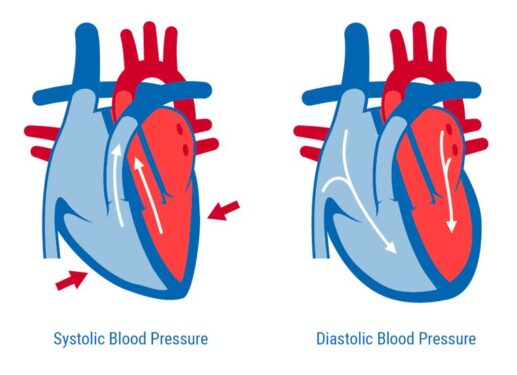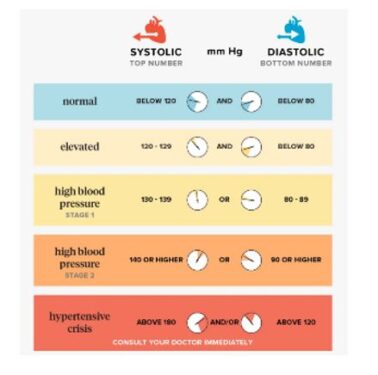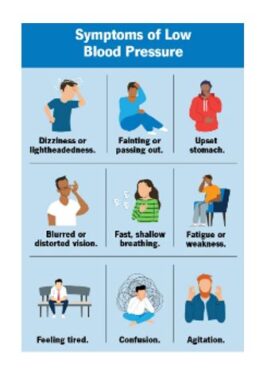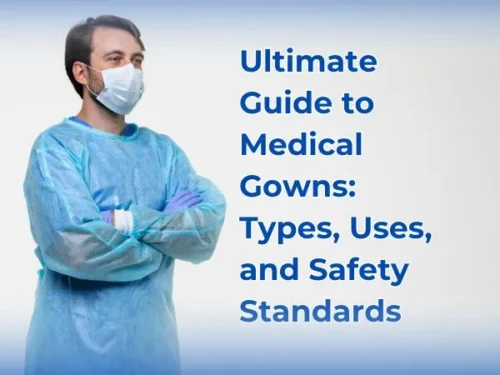Among many parameters taken to evaluate the health state of a patient, the measurement of blood pressure is a critical one. It gives insight into the condition of a patient’s heart and blood vessels as well as the possible problems associated with them. But what exactly is the blood pressure and what is the range in which, if your blood pressure value falls, it is safe to say that you are completely healthy? Let us take a look.
What is blood pressure?
The heart has the job to pump the oxygenated blood which has accumulated in it in order to direct it toward the body. For this purpose, the cardiac muscles of the heart put pressure on the blood. As a response to this applied pressure, the blood leaves the heart and starts flowing into the adjacent blood vessels i.e. the arteries. While flowing into the arteries, the blood pushes the arterial walls with impact which is called the pressure of the blood. Thus blood pressure can be defined as the force applied by the blood onto the walls of the arteries while passing through them. It is abbreviated as BP.

Blood pressure measurement using a sphygmomanometer along with a stethoscope
Normal blood pressure value
This blood pressure, when being quantified, has to be measured into two values i.e. systolic blood pressure and diastolic blood pressure. The normal value of BP is 120/80 mm Hg which expresses the systolic vs diastolic blood pressure.
What is systolic blood pressure?
The contraction of the heart is called systole. During this contraction, the pressure which is applied by the cardiac muscles onto the blood is called systolic pressure or the top number. The normal systolic pressure is below 120 mm Hg but should not ideally fall below 90 mm Hg.
What is diastolic blood pressure?
Once a contraction ends, the heart muscles go into a state of rest during which the pressure on the blood also falls. This state of the heart is called diastole and the pressure applied onto the blood in this state is diastolic pressure or, as it is also called, the bottom number. The normal diastolic blood pressure must not exceed 80 mm Hg but should not fall below 60 mm Hg.

Contraction and dilation of the heart during systole and diastole
Why are both important?
Although both the systolic and diastolic blood pressures are necessary to understand the patient’s physiological condition, sometimes the superiority of systolic over diastolic BP is portrayed. It is somewhat of a wrong notion as the contraction, as well as dilation of the heart, must be normal for the heart to be completely healthy.
How to take BP?
To check the blood pressure of an individual, a sphygmomanometer, along with a stethoscope, is employed. However, digital BP meters are also available in the market. In both cases, the following steps must be followed for the accurate determination of BP:
- The individual should be asked to sit down and remain calm for at least 5 minutes before taking the BP value.
- It must be made sure that the patient is sitting with legs stretched out and does not need to use the bathroom as the full bladder may affect the BP readings.
- The cuff of the BP apparatus should be placed on the arm at a level equivalent to the heart.
- Systolic and diastolic blood pressure points must be checked and written down for future reference.
- It is advised to measure BP at the same time every day to eliminate errors and make day-to-day comparisons even more accurate.
Irregularities in the blood pressure-Hypotension and Hypertension
Human blood pressure is an ever-fluctuating parameter that changes multiple times over a day. These modifications, however, are normal to occur and can be of significance if the BP value falls below 60 mm Hg or exceeds 120 mm Hg. In this case, extremely low as well as elevated blood pressure is termed as hypotension and hypertension respectively.

Normal systolic and diastolic BP along with numerical hypertension indicators
Causes of hypotension
By addressing the possible causes of low blood pressure, it can be easily managed. These causes may comprise the following:
- Severe dehydration
- Loss of blood
- Malnutrition
- Septicemia i.e. infection in the body
- Hormonal imbalance
- Anaphylactic shock i.e. severe allergic response commonly to a given medication
- Any type of heart disease
- Pregnancy
Symptoms of hypotension
In the case of low blood pressure, the following symptoms may be experienced by the patient:
- Lightheadedness
- Confusion
- Visual changes
- Lack of physical strength
- Sleepiness
- Fainting
- Syncope

Some of the symptoms of hypotension
Management of hypotension
To treat a hypotensive patient, the following measures can be adopted:
- Increased salt intake
- Treatment of dehydration by hydrating the patient with water and other fluids
- Frequent consumption of food
- Avoidance of sudden posture changes
- Wearing compression stockings
- Sitting with crossed legs
Causes of hypertension
Some of the causative agents of hypertension are:
- Lack of regular exercise
- Low level of potassium
- Too much salt consumption
- Smoking
- Obesity
- Family history
Symptoms of hypertension
In case of high blood pressure, the patient may experience the following symptoms:
- Pain in the chest area
- Difficulty in breathing
- Anxiety
- Blurred vision
- Headache
- Dizziness
- Nausea sometimes leads to vomiting
- Nasal bleeding
- Palpitations mostly in the neck area
In severe cases, additional and more critical symptoms can also be experienced:
- Blood in the urine
- Loss of control of the facial muscles
- Paralysis of the extremities

Symptoms of the severe hypertensive syndrome
Management of hypertension
Constantly high blood pressure can lead to many health complications which can turn fatal. These complications include:
- Heart failure
- Heart attack
- Stroke
- Aortic aneurysm
- Kidney failure
- Vascular dementia
- Loss of vision
But the good news is that with some modifications in lifestyle as well as in diet, it is possible to avoid the risk of high blood pressure. These changes include:
- A moderate amount of regular exercise
- Consumption of a balanced diet
- Reduction in intake of certain foods such as sodium and caffeine
- Stress management
- Limiting alcohol consumption and smoking
Conclusion
Blood pressure is one of the most critical health parameters which can give a somewhat accurate insight into the health of a person’s heart and blood vessels. Constantly low or high BP indicates the presence of the diseases such as stroke, heart failure, etc. Therefore, the measurement of systolic and diastolic BP regularly is helpful, especially for patients in whom blood pressure fluctuations are common.

PhD Scholar (Pharmaceutics), MPhil (Pharmaceutics), Pharm D, B. Sc.
Uzma Zafar is a dedicated and highly motivated pharmaceutical professional currently pursuing her PhD in Pharmaceutics at the Punjab University College of Pharmacy, University of the Punjab. With a comprehensive academic and research background, Uzma has consistently excelled in her studies, securing first division throughout her educational journey.
Uzma’s passion for the pharmaceutical field is evident from her active engagement during her Doctor of Pharmacy (Pharm.D) program, where she not only mastered industrial techniques and clinical case studies but also delved into marketing strategies and management skills.


















